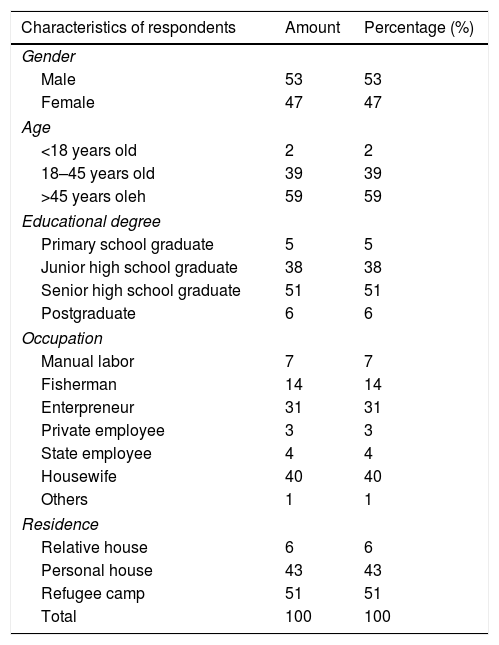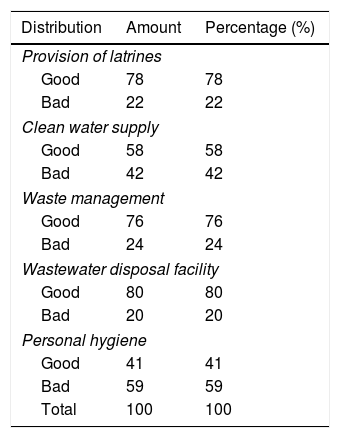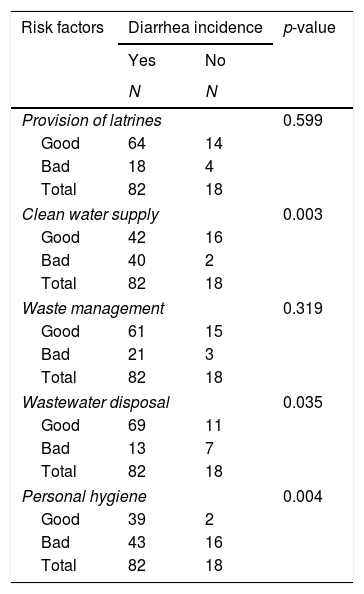Natural disasters have the potential to cause health problems both of environmental changes and access to health services. Sanitation is one aspect that lead to health problems in post-disaster areas. Diarrhea is a common disease sanitation related disasters. This study aims to determine the risk factors for post-disaster diarrhea.
MethodThis study is an observational analytical study with Cross Sectional. The sampling was a non-probability technique based on inclusion and exclusion criteria. The research data were analyzed using univariate, bivariate and multivariate.
ResultsThe factors associated with the incidence of diarrhea include the provision of latrines (p=0.599), provision of clean water (p=0.003), waste management (p=0.035) and personal hygiene (p=0.004). The results of logistic regression analysis showed that the factor of water supply was p=0.002, waste management factor p=0.007 and obtained R2 value of 0.399 that clean water supply, waste management and personal hygiene contributed 39.9% in influencing the prevalence of diarrhea.
ConclusionThere is a relationship between the provision of latrines, clean water supply, waste management, waste water disposal facilities and personal hygiene with the incidence of diarrhea in the affected areas.
Artículo
Comprando el artículo el PDF del mismo podrá ser descargado
Precio 19,34 €
Comprar ahora











